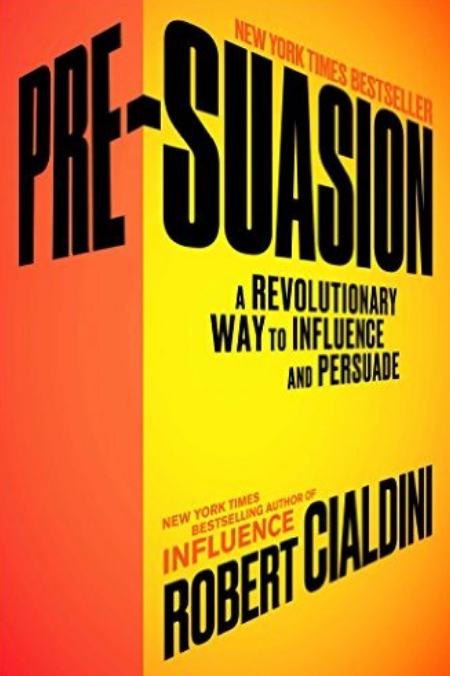Location, location, location…and creativity
We’ve all heard about the three things that matter in real estate—location, location, and location. Well, they matter in creative endeavors too.
Consider these two sentences:
- My academic subdiscipline, experimental social psychology, has as a principal domain the study of the social influence process.
- I can admit it freely now: all my life I’ve been a patsy.
Clearly written by two different people, right?
Wrong.
Robert Cialdini wrote both of them for his book Influence: The Psychology of Persuasion. Sentence #1 was his first draft of the opening line of the book; sentence #2 opens the book as published.
What’s the difference between the two sentences? Location (3x). 
As Cialdini discloses in his most recent book, Pre-Suasion: A Revolutionary Way to Influence and Persuade, he wrote the first sentence in his office at a university, with a view of
“an array of imposing buildings housing various academic institutes, centers, and departments. On either border of this outside window to the academic world, I’d lined shelves with materials that provided an inside window to that world: my professional books, journals, articles, and files.”
But sometimes he wrote in his home office, where he’d see
“the flow of passersby—mostly pedestrians on their way to work or to shop or to do any of a thousand ordinary things that people ordinarily do.”
After writing in both places for some time, he collected his work and read it. And he was surprised to find that
“…the work I’d done at home was miles better than what I’d done at the university, because it was decidedly more appropriate for the general audience I’d envisioned.”
He stopped writing his book at the office. Working at home, he edited everything he’d created at the university. And that’s where sentence #2 comes in.
Now, #2 doesn’t give us nearly the same amount of information as #1. An academic might find it ridiculously uninformative—not to mention subjective. But Cialdini’s whole purpose in writing this book was to make his ideas accessible to a general audience—which academics decidedly are not.
Sentence #2 may tell you less about his work than sentence #1—but it’s also much more likely to capture your attention and keep you reading.
Changing your location, mentally
Cialdini had the luxury of being able to write wherever he liked; but some writers are tied to an office. Or worse yet, a cubicle. So how can you retrofit your environment to loosen up your creativity?
I’ve written before about using a device like an empty chair to symbolize your audience. You can also print out photographs of the people you want to reach—Cialdini says action photographs prove more helpful than headshots. Post the photos on the walls around you or create a slideshow on your computer and run through it before you start work. Trot it out again whenever you feel stuck.
Have a water-cooler type conversation with a target audience member. Not about the subject of your writing—just shoot the breeze: How was your weekend? Did your kid decide on a college yet? Set a timer for 15 minutes and just immerse yourself in the conversation, while your fingers type it out. At the end of your 15 minutes, close out that document and start in on your draft.
Your company may expect your body to be at your desk, but your mind can go anywhere it likes. Send it wherever your audience lives, and your writing will connect with them much more powerfully.